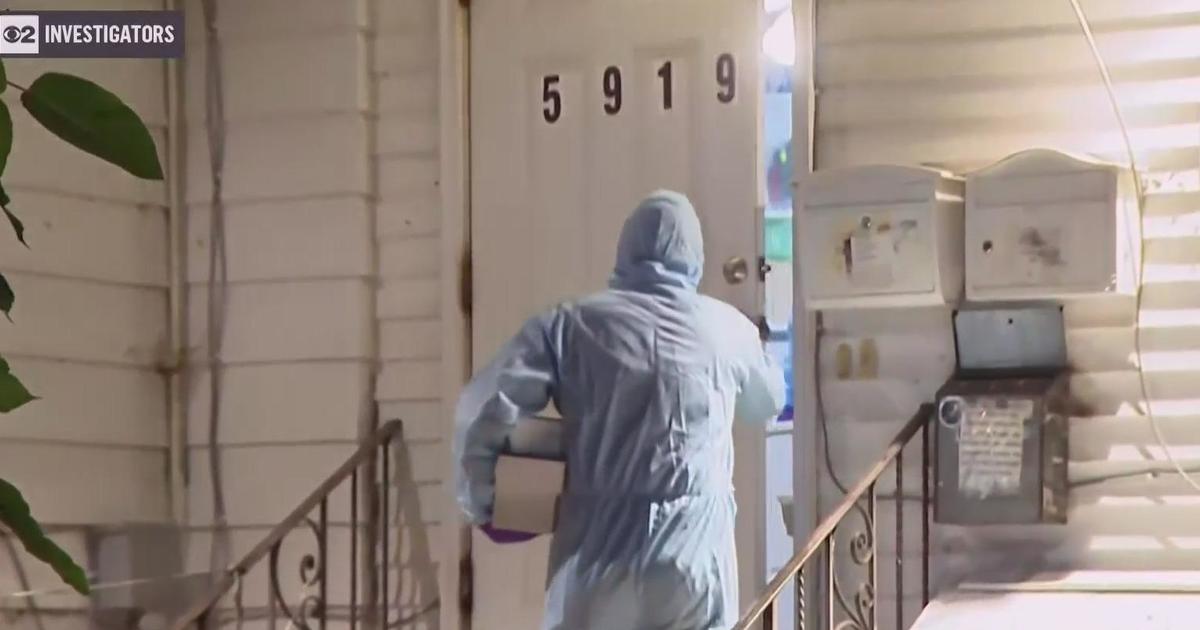Illinois To Lose Congressional Seat Following 2020 Census
CHICAGO (CBS/AP) -- Illinois is losing a seat in Congress, after the U.S. Census Bureau released population data for determining how many seats each state gets on Monday.
Illinois joined California, Michigan, New York, Ohio, Pennsylvania, and West Virginia in losing seats ahead of the 2022 midterm elections. Illinois will now have 17 seats in Congress. Of the state's current 18 members, 13 are Democrats and five are Republicans.
Texas will gain two seats, while Colorado, Florida, Montana, North Carolina, and Oregon each will gain one seat.
The changes could make it that much more difficult for Democrats to maintain their slim majority in the House of Representatives, where they hold 218 seats. Republicans currently hold 212 seats, with five vacancies – four seats most recently held by Democrats and one most recently held by a Republican.
The House has 435 total seats. Every 10 years, following the decennial Census, the allotment of seats for each state could change as the nation's population shifts. States that have grown could add additional seats, while states that shrink could lose seats.
Illinois also lost a seat in Congress after the 2010 Census, as its population has been slowly but steadily declining for years.
"Unfortunately, this has been happening for more than a decade that we've had outmigration from the state," Gov. JB Pritzker said Monday morning before the Census announced how Congressional seats would change.
The governor said he's made it a priority to reverse the state's population loss, and said the largest portion of people moving out has been young people who have chosen to go to college out of state because they couldn't afford to do so in Illinois.
"We weren't making it affordable enough," Pritzker said.
Pritzker said that's why he worked with the state legislature to increase the amount of financial aid available to Illinois college students through the Monetary Award Program, also known as MAP Grants, as well as the AIM HIGH grant program for merit-based scholarships.
"Collectively, that has helped. Unfortunately, as you know, just when that was starting to take effect, COVID hit, and for many students, it was difficult for them to go to college for their first semester last fall," he said. "But we're starting to see some relief and alleviation of that."
The governor said it appears the number of kids attending four-year colleges in Illinois has stabilized for the first time after years of declines.
With Democrats controlling the governor's office and both chambers of the Illinois General Assembly – and therefore controlling the process of redrawing the state's congressional districts – it's likely a Republican-held seat will be eliminated when the new map is drawn.
State lawmakers already have begun the redistricting process, having held a number of hearings
Before he was elected, Pritzker vowed to veto any redistricting map created solely by legislators, political party leaders, and their staffs, calling for both parties to agree on an independent commission to handle creating a new map.
The Illinois Constitution requires lawmakers to approve a new map by June 30, otherwise an eight-member commission must be formed with four members from each party, to redraw districts by Aug. 10. If they still can't agree by then, the Illinois Supreme Court would have to come up with two nominees for a ninth commission member -- one from each party -- and the Illinois Secretary of State's office would have to choose one nominee at random by Sept. 5. The commission would then have until Oct. 5 to submit a new map.
However, that process is complicated by the fact that the full Census data lawmakers typically use to draw up maps won't be available until after the June 30 deadline, perhaps as late as September, due to delays caused by the pandemic.
Pritzker declined to predict what might happen with the redistricting process as a result of the Census delay, or whether any map that is drawn up might face a lawsuit once full Census data is released.
"This is a legislative endeavor, getting a redistricting map put together. We're certainly monitoring it. I want to make sure that it gets done right, but it doesn't come to the governor until the legislature gets together and draws the map," he said.
The results of the Census also likely spell a loss of federal funding while at the same time strengthening Democrats' political grip on the state.
"Most people who build a statistical model on how much federal money does a state get will find that more seats means more money," said Brian Gaines, political scientist at the University of Illinois at Urbana-Champaign.
In the immediate future, Illinois can get a financial boost because of its current influence, said Glenn Poshard, who represented extreme southern Illinois in Congress from 1989 to 1999. U.S. Sen. Dick Durbin is the Senate Majority Whip. The Democrat was just elected last fall to a fifth term.
Census numbers weren't available Monday for counties or cities such as Chicago, the nation's third-largest. Other estimates have put the city's population at 8.87 million, up 2.8% from a decade ago. But with solid Democratic control of such a tightly packed bloc of voters, few will notice change there.
With Democrats holding 13 of the state's 18 congressional seats, controlling the governor's office and dominating the state Legislature, little else should change, Gaines said. The 14th Congressional District, running from the top to the bottom of the Chicago metropolitan area on its far western edge, will likely be redrawn to boost Rep. Lauren Underwood, a Democrat who narrowly won a second term last fall by just over 1 percentage point over Republican state Sen. Jim Oberweis.
Democrats are likely take another run at the 13th District in central Illinois, where Republican U.S. Rep. Rodney Davis has won five straight elections in a district that already leans Democratic.
"We weren't really expecting the partisan balance to shift very much," Gaines said. "It's already tilted in a way that slightly exaggerates how Democratic the state is."
Fewer Electoral College votes will mean a little less influence on the national stage. But Illinois, a one-time bellwether whose voters chose the winning candidate in every presidential election from 1920 to 1996, has turned so heavily Democratic in national elections that it's no longer competitive; the last time it was in play for the GOP was 1988.
The cosmetic change — larger districts drawn to cover more ground for each member — aren't as immediately apparent, but eventually become evident to constituents.
Poshard recalls complaining to colleagues in the House dining room about his district's size. He said he kept quiet after Rep. Pat Willams, then one of two House members from Montana, described a district that would stretch from Chicago to Washington, D.C.
But voters in Montana or similar expanses such as Wyoming are acquainted with House members being stretched thin across an entire state. In Illinois, where districts keep getting larger, constituents grow impatient and officeholders, who rush home after a Monday-to-Thursday congressional week, frustrated, Poshard said.
"You've got Friday and and part of Saturday to cover a whole district, and mine had 30 counties in it," he said. "It's difficult to get around and meet with the county boards and all the folks that want to talk to you."
(© Copyright 2021 CBS Broadcasting Inc. All Rights Reserved. The Associated Press contributed to this report.)



